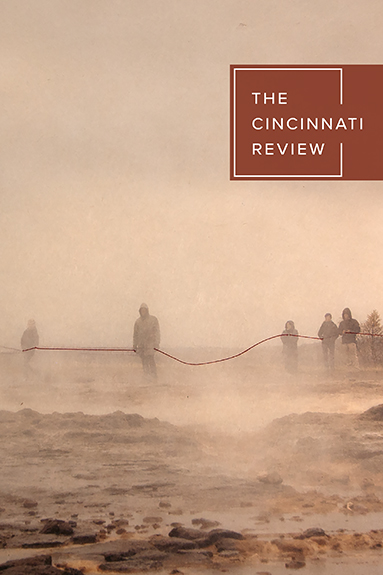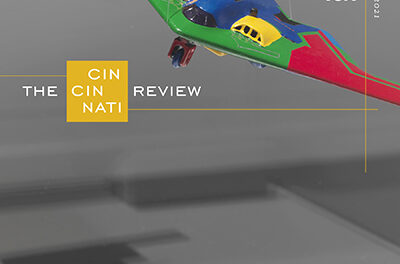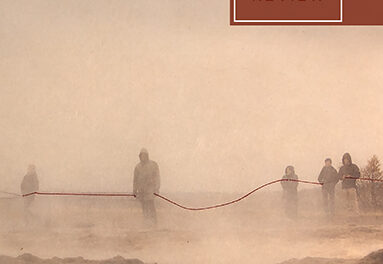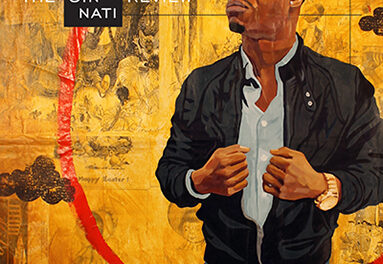in the ER, on the gurney, white-sheeted, not yet cold. I fall on him. The husk of him. Still beautiful, that body. Long, lean, pleasingly hirsute.
I love your fur, I used to giggle, stroking an arm, a leg.
The nurses, the orderly, the so-young doctor recede, a sucking back my skin registers: their gaze peeling off, leaving us alone together. À deux, again but anew. No longer me and him—we, hard-won, triumphant—but me and his body emptied of him, his capacious, arrhythmic heart having stopped and refused to restart.
I feel into it, this new state of us: him dead, me alive. I stare, tears rivering. His eyes are closed, as if, for the first time ever, he’s sleeping soundly. I take a photo of his dead face, then another from a different angle—a forensic effort to seed in me truth I do not want to see.
~
The ancient Greeks puzzled out the phenomenon of human vision. How was it possible to see, or not see? According to their theory of extramission[1], a person’s elemental fire, tucked behind the eye’s dark pupil, projected outward to seek and palpate objects, then bring back to the viewer what was discovered in that field of vision.
This theory for centuries underlay romantic and devotional notions about tactile ties between the viewer and the viewed. Worshippers kneeling before icons believed themselves to actually caress the holy object with their gaze. Cupid’s bow shots weren’t only metaphor; a lover’s body was genuinely pierced by the extramissive arrows of their beloved’s sight, binding the two into one. John Donne wrote, “Our eye-beams twisted, and did thread / Our eyes upon one double string.”
~
A gaze touches my hand, locked with his. I hold the hand of a dead man. Connected. Not releasing. The nurse’s eyes lift away as his surprise shifts to sympathy. We converse, about necessary arrangements. A living body will need this room, this gurney, soon. My fingers remain the cradle for the dead hand, colder now that an hour has passed. Stiffening. Each ridge of each nail, the cuticle torn yesterday, the scars and calluses and age spots accumulated through seven decades, all as familiar as my own flesh.
The nurse draws the shade, leaves, latches the door. Privacy, but lingering subtle pressure for me to be done. To move on. I raise the sheet, take a last tour of his nakedness, caress those long limbs, the narrow chest. His face holds my gaze. Corpse-gray yet paradoxically younger, smoother than over coffee this morning. His suffering—thousands of sleepless nights, lost sons, thwarted ambition—settling like the stagnant blood now pooling in his torso.
I lift one eyelid, then the other. Cornflower-blue, those eyes, still. Completely stilled, lifeless, yet somehow some light, something innately him—his reliable, generative capacity for joy? his avidness for living and giving?—remains.
Banked elemental fire?
Those eyes meeting mine, the first time and every time, did pierce, did thread me to him. Above the shoulders of any crowd, across a table’s width or a room’s span, a detonation: stomach jolt, heart lift, a deep twisting dive that shot the world away and bound us in a single skin.
~
Two trees in close quarters sometimes fuse in a natural phenomenon called inosculation[2]. Limbs touch, then braid, friction abrades bark, and from that small wound, self-grafting can result. In forestry these conjoined trees are known as gemels, from the Latin word meaning “a pair.”
~
Leaving his body, I feel our tie rip but do not look back. I march like a soldier given orders to no foreseeable destination by no known path. Gutshot. Hemorrhaging. In our home alone that night and the next and the next my heart guns, batters my ribs. I lie down and wonder if it might stop so I, too, can die because we are over. Fourteen years my husband, twenty-eight years desired and desiring—the sight, the scent, the weight, the taste, the heat of him now gone, cut away, no recourse.
Ten days past his death, my retina tears off the eyewall.
~
In emergency surgery, pars plana vitrectomy and endolaser photocoagulation[3] are performed to address retinal detachment and prevent or reduce permanent vision loss. Through a small incision, the central vitreous gel is aspirated, subretinal fluid is pushed out via a fluid-air exchange, and the endolaser burns the area near the detachment site to make a scar, which assists the retina in reattaching to tissue. An intraocular tamponade—a gas bubble—is injected into the eyeball, pressing the retina into place, then dissipating over two to three weeks. During the first week the patient must remain prone to keep the bubble, and the healing retina it supports, in place. A vitrectomy recovery chair is recommended to ergonomically support the head and neck during the prone period.
~
In the OR, someone I cannot see—the surgeon? the anesthesiologist?—instructs me to hum to communicate the need for more sedation. Awake, immobilized, I am bodiless. I am my affected eye, lids stretched over-wide, clamped, hurting. I hum like a turbine, or so I believe, but no ease manifests. Shadow sticks stir deep, whir hard into that eyeball, igniting a hallucinatory light show: solar flares tangled in capillary webs bizarrely miscolored in cheery Easter-candy pastels.
Weeks pass before I read online the description of what has been done. The laser spotwelding the ripped and sagging retina. Tiny burn-scars simultaneously assisting and permanently impeding that eye’s vision.
On the gurney, I have one wish only: to close that eye and escape that room. For the next seven days and nights, face down in the medically glorified massage chair, or ambling half-blind, gaze riveted to the floor on doctor’s orders, I see only what I most do not want to: I let him go. Turned him loose. Not my choice, but a fact.
Until the eye emergency, I’d body-blocked his dissolution from man to memory, living our wound, keening constantly. My retina’s collapse was my body’s giving way. So long gemeled, then untrellised, I shattered. But—black moon rising through my right eye’s field of vision, millimeters from blotting out, forever, its reach—I defaulted to self-care. Individuated, helplessly. The surgeon kindly suggested a moratorium on tears to help inflammation subside; the widow would want two eyes to best see her way forward.
~
In the crematorium retort, a human body is heated to between 1400 and 1800 degrees Fahrenheit. The cremation process[4] takes one and a half to two hours. Cremated remains are technically not ashes, but pulverized bone. The chemical makeup[5] is primarily calcium phosphate and sodium—alkaline and salty. Although plants need calcium, phosphorus, sodium, and potassium, the level of these nutrients in cremated remains is too high, permanently impeding plant growth above and around the area where cremains are deposited. To address the naturally high alkalinity of cremains, a soil amendment can be added to lower the pH and render the nutrients bioavailable, thereby benefiting plant life.
~
When I return to his body, he is five pounds of fine white powder spangled with bone chips. I am eight weeks past my surgery. At the green burial ground we’d once toured together in a golf cart with a guide, choosing our spot, arranging to have a redbud tree planted to mark it, I inter his remains alone. I sing, sound bells, chant mantra. Read his poems aloud to December damp and the circling, calling crows. We married in our fifties at Thanksgiving, cognizant of celebrating last light, the flowers surrounding us a feast of gold, bronze, sienna, bittersweet orange. Under gray occluded sky, I stir into his ashes rose petals and shards of poem and the recommended organic amendment, mixing all in a tall pot, trowel in one hand, garden fork in the other, as if tossing a heavy salad.
He was a gardener. Roses, peonies, perennials, fruit trees. I watched him mix compost, light sand, and bags of garden soil in a wheelbarrow, then shovel it into the beds he’d lined out, remediating the red clay our house was built on. From him I’d learned the term for this sweaty work: improving the soil. A process to which he was devoted. I laugh-cry as I stir him. He would so appreciate the corrected pH. He’d want what was left of his body to improve the place it landed.
His body, for him, was a problem. A high-mileage beater he drove hard, relied on, distrusted, used up. All his life, he told me, his body betrayed him—seizures, migraines, sleep disorder, frangible bones. Multiple surgeries, spawning more problems than they fixed. He lived in his head but strove to honor that body, never more than when he gave it to me.
His body, for me, was the ground I grew from, the seat of my joy. Now it is dirt. I pour him into the earth, close the small hole with a spade, tamp down soil and moldering leaves. Rest a spray of claret lilies atop, and move on, my vision permanently impaired, my feet uncertain on the path.
Just one thing is certain: my body will return, to lie near what remains of his.
[1] Amelia Soth, “The Extremely Real Science behind the Basilisk’s Lethal Gaze,” JSTOR Daily, March 28, 2019, https://daily.jstor.org/the-extremely-real-science-behind-the-basilisks-lethal-gaze.
[2] Wikipedia, s.v. “Inosculation,” last modified November 12, 2023, 09:07, https://en.wikipedia.org/wiki/Inosculation.
[3] Norlase, “Laser Photocoagulation: Concept, Procedure, and Efficiency of Green Laser for Eye Conditions,” January 24, 2022, https://norlase.com/laser-photocoagulation.
[4] “The Cremation Process,” Funeralwise, accessed November 26, 2023, https://www.funeralwise.com/cremation/cremation-process.
[5] “Cremated Remains: Options for Green Burial & Scattering,” Carolina Memorial Sanctuary, March 29, 2023, https://carolinamemorialsanctuary.org/cremated-remains-options-green-burial-scattering.
Christine Hale is the author of a novel, Basil’s Dream (Livingston Press, 2009), and a memoir, A Piece of Sky, A Grain of Rice (Apprentice House Press, 2016). Her short fiction and nonfiction pieces have appeared in numerous journals, including Arts & Letters, The Sun, Still, Hippocampus Magazine, and Prime Number Magazine.
For more great literary nonfiction in Issue 21.1, order now in our online store. Digital copies are only $5.










